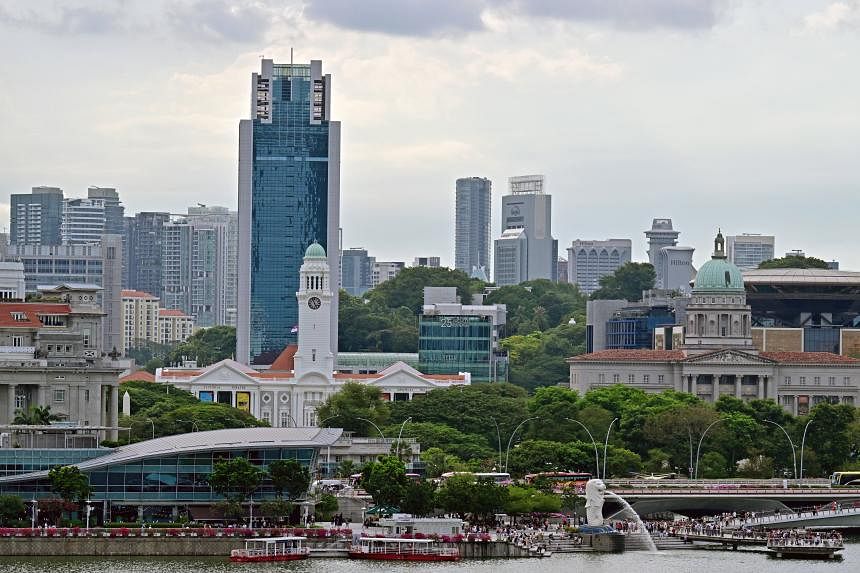SINGAPORE – The Singapore economy is on track for faster growth in 2024, aided by resilient global demand for its exports and above-trend growth in tourism-related industries, the central bank said on April 26.
The Monetary Authority of Singapore (MAS) maintained its estimate of 1 per cent to 3 per cent GDP growth in 2024, made in November, after the 1.1 per cent expansion in 2023. The main clusters of the economy are converging towards their pre-pandemic growth rates, it said.
“Growth in the trade-related and modern services clusters are expected to improve from last year, while that in the travel-related and domestic-oriented clusters will continue to moderate but stay above trend,” it said in its latest twice-yearly macroeconomic review.
The trade-related sector includes manufacturing and wholesale trade, while the modern services cluster is made up of financial, professional, information technology and media services companies.
The economy will be propelled by the ongoing recovery in the global electronics industry and the expected peaking of interest rates worldwide, said MAS.
Its optimism over Singapore’s outlook follows the International Monetary Fund’s April 16 upgrade of its 2024 global growth forecast to 3.2 per cent, from the 3.1 per cent projection in January 2024 and 2.9 per cent in October 2023.
MAS estimates that the global economy will expand by 3 per cent in 2024, slightly lower than the 3.3 per cent recorded in 2023, as the impact of past interest rate hikes and less supportive fiscal policy in most economies continues to exert a restraining effect on growth.
“Still, the global economy is likely to emerge unscathed in 2024 from the tightening of financial conditions, with economic growth set to become gradually more broad-based over the year,” MAS said. It added that global growth is set to improve to 3.3 per cent in 2025 as central banks start to cut interest rates.
The World Trade Organisation forecasts global merchandise trade to expand by 3.3 per cent in 2024, up from 0.8 per cent in 2023. In tandem, Enterprise Singapore expects the Republic’s non-oil domestic exports to increase by 4 per cent to 6 per cent in 2024 – a turnaround from the 13.1 per cent contraction in 2023.
While manufacturing activity slowed in the first quarter of 2024, MAS said the sector should continue to benefit from the ongoing global recovery in demand for electronic goods, especially for memory chips – a type of semiconductor that stores data.
Meanwhile, major central banks are unlikely to further tighten their monetary policies after having raised interest rates aggressively in the past two years to fight inflation. The benign policy-rate outlook should bolster financial sector activity here, MAS said.
Separate data released later on April 26 showed Singapore’s manufacturing output shrank 9.2 per cent year on year in March. For the first quarter of 2024, manufacturing contracted 1.8 per cent from a year ago, reversing from the 1.8 per cent expansion in the previous quarter.
MAS, in its briefing, said the pullback in electronics output was likely because of some short-term fluctuations in output of the crucial semiconductor segment as the underlying improvement in the global tech cycle remains broadly intact.
Nonetheless, Singapore’s short-term prospects will be underpinned by the upturn in the global tech cycle, and the expected start of the reversal of global monetary policy tightening, said MAS.
The modern services cluster also contracted in the January to March period, led by weaker performances across finance and insurance, professional services, and information and communications.
MAS said growth in the tourism-related industries should taper from the first-quarter boost from an unprecedented line-up of large-scale concerts.
Singapore experienced a surge in tourism activity as concerts held by internationally renowned artists Coldplay in January and Taylor Swift in March drew more than half the audience from abroad.
International visitor arrivals rose by 26 per cent in the first quarter from the previous three months and were up a significant 50 per cent compared with the same period in 2023.
Private sector analysts have estimated the tourism receipts generated by the concerts in Singapore ranged from $350 million to $450 million, depending on the assumptions made, such as the proportion of foreign visitors among the concertgoers and the length of stay in Singapore. But the concert bonanza is unlikely to be sustained through the rest of 2024.
Still, tourism-related growth will be underpinned by upcoming events of a smaller scale, as well as the continued recovery of Chinese tourist arrivals following the removal of remaining travel frictions, MAS noted.
The global economy has been surprisingly resilient, despite significant central bank interest rate hikes to restore price stability. However, the pace of disinflation in Singapore’s major trading partners, especially the advanced economies, has slowed after significant progress last year.
MAS warned that a delayed and slower pace of monetary easing in advanced economies could trigger latent financial vulnerabilities and consequently weigh on growth. Additionally, geopolitical risks or extreme weather events could result in supply-driven price hikes of goods and commodities.


